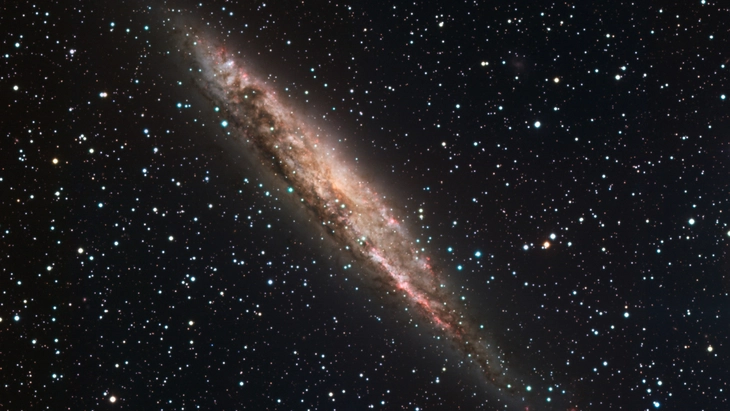
NGC 4945 is a spiral galaxy just 11 million light-years away, in the constellation Sagittarius - Photo: ESO
This cosmic object was named "Punctum", which is Latin for "point".
In an article published in the scientific journal Astronomy & Astrophysics, Dr. Elena Shablovinskaia of the Institute of Astrophysics, Diego Portales University, Chile, said that a team of scientists discovered Punctum thanks to the ALMA (Atacama Large Millimeter/submillimeter Array) radio telescope.
Until now, astronomers still do not know what it is, only that it is very compact, has a magnetic field with a surprisingly structured structure and at its center is an object that emits an extremely large amount of energy.
Unlike most familiar celestial objects, Punctum glows only at millimeter wavelengths, the type of radio waves typically emitted by very cold matter like protoplanetary disks or interstellar molecular clouds. Yet the energy Punctum radiates is surprisingly powerful.
According to Dr. Shablovinskaia, Punctum is 10,000–100,000 times brighter than typical magnetars, 100 times brighter than microquasars, and 10–100 times brighter than most known supernovae.
Among the stellar sources of light in the Milky Way, only the Crab Nebula (the remnant of a supernova that exploded in 1054) outshines the Punctum.
Punctum is located in the spiral galaxy NGC 4945, about 11 million light-years from Earth, relatively close to the Milky Way. However, it is completely "invisible" to visible light and X-rays, revealing itself only through radio observations with ALMA.
This puzzled scientists. The data showed that Punctum had a highly organized magnetic field, emitting synchrotron radiation (when charged particles move near the speed of light around magnetic field lines). This is typically seen in compact objects like pulsars or magnetars, but none have reached the luminosity of Punctum.
Another hypothesis is that Punctum may be an extremely compact supernova remnant, but its small size does not fit the familiar pattern.
For now, Punctum remains outside any existing astronomical “catalogue.” “It’s truly exceptional, nothing like it has ever appeared in previous surveys,” Shablovinskaia said.
Scientists expect that in the near future, the James Webb Space Telescope (JWST) will observe Punctum in the infrared range, thereby helping to determine its true nature: whether it is simply synchrotron radiation or is there also dust and emission lines attached.
"This result reminds us that there are still countless unknowns in the universe," said Dr. Shablovinskaia. "The punctum shows that the millimeter sky still holds discoveries that will change our understanding of the universe."
Source: https://tuoitre.vn/phat-hien-vat-the-vu-tru-bi-an-gan-dai-ngan-ha-2025081415165507.htm





![[Photo] Next to the "mountain of trash" after the flood, Tuy Hoa residents strive to rebuild their lives](/_next/image?url=https%3A%2F%2Fvphoto.vietnam.vn%2Fthumb%2F1200x675%2Fvietnam%2Fresource%2FIMAGE%2F2025%2F11%2F24%2F1763951389752_image-1-jpg.webp&w=3840&q=75)


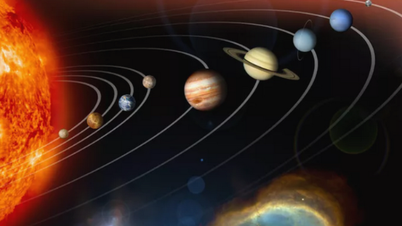


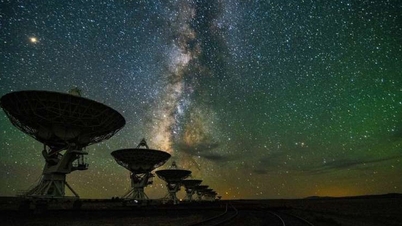
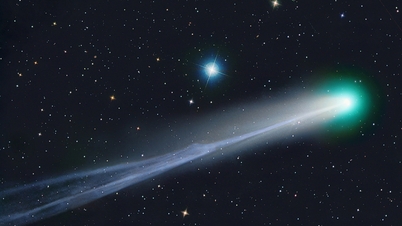


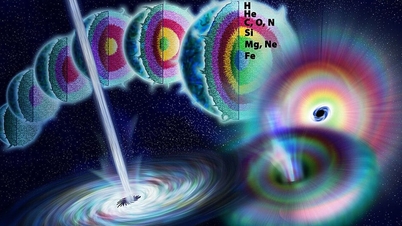























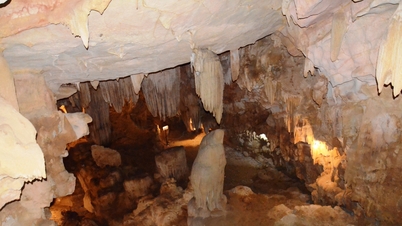






































































Comment (0)